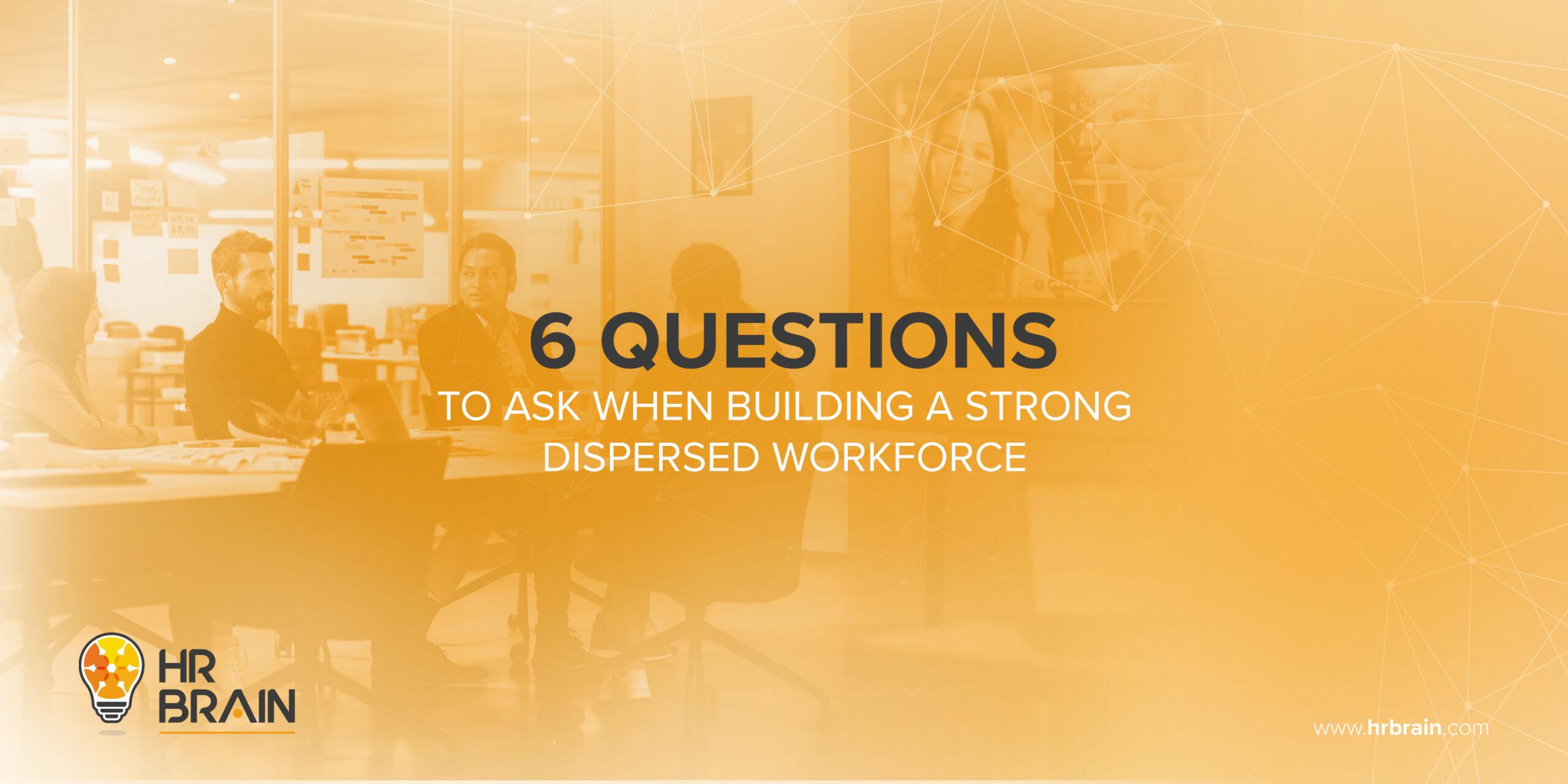6 Questions to Ask When Building a Strong Dispersed Workforce:
A dispersed workforce can allow you to explore a variety of talent pools and can reduce office expenses. But how do you build a team where each person is in a different city or state? That’s the challenging part, but we combined six key HR questions to ask yourself before executing a dispersed workforce, which will help simplify the process.
- How to plan and recruit diverse teams and foster inclusion?
Many companies are implementing diversity, equity, and inclusion (DEI) initiatives to create a sense of belonging for all employees. Having distributed teams can expand your talent pool, but only if you recruit and retain the right employees. Consider the below:
- Sourcing candidates on different platforms and mediums to ensure a wider range of options.
- Auditing all onboarding materials to ensure they convey DEI strategies.
- Implementing DEI in writing, distributing widely, and providing ongoing education.
2. What strategies can you use to promote company culture with a workforce across multiple states?
Geographic location should not be a barrier in maintaining a cohesive company culture, because without it, you would be sacrificing one of the most important elements of your company. Here are some tactics that can help you create and maintain your company culture:
- Make sure you reflect your company’s culture in recruiting, onboarding, and everyday tasks.
- Encourage managers to be keen on building relationships and routines with their teams.
- Encourage employees to socialize and interact during meetings.
- Acknowledge employee achievements that align with your company’s culture.
3. What steps can you take to align objectives and key performance indicators (KPIs) for employees across various locations?
When dealing with dispersed teams, you will need an intentional strategy for your KPIs. Consider using the following:
- Establishing organizational goals and aligning department goals.
- Creating goals and KPIs in various channels
- Doing regular check-ins with your employees to monitor their progress and resolves any issues they might encounter.
- Implementing goals and values in performance reviews
4. What measures can you take to ensure that your HR requirements are met across regions and states?
HR compliance may seem more complicated when managing dispersed teams than with regular teams, so consider integrating multi-state compliance in your HR department. This might include:
- Ensuring that paid leave, leaves of absence, anti-discrimination protections, and minimum wage rules are carefully revised and implemented.
- Paying attention to new hire documents, payroll taxes, and pay transparency regulations.
5.How to manage compensation and benefits across different geographic locations?
Each state may have different laws and regulations regarding compensation and benefits; therefore, it’s important to have a strategy to navigate these rules and apply them to different regions. Here are some ideas:
- Understanding and ensuring employee classification and minimum wage regulations.
- Considering equal pay laws, salary transparency, health benefits, and expense reimbursement.
- Developing a plan to navigate compensation and benefits laws that align with your company.
6. How to ensure employee safety and provide proper employee compensation coverage?
Companies must ensure that their employees are properly safeguarded, and that their physical and mental wellbeing is considered. Here are a few examples:
- Prioritizing health and safety rules to ensure that your employees are satisfied.
- Implementing regional and state safety regulations.
- Considering the health benefits and workers’ compensation requirements for remote employees.
With these questions, you can begin to respond accordingly and implement the appropriate strategies that align with your company. Having a strategy to manage your dispersed teams will help you establish a balance between physical and remote teams and enhance your business to new levels.







